With a single week remaining in the 2021-22 NHL regular season, teams and fans alike have turned their attention to the playoffs. Stars are being rested as first-round matchups are slowly falling into place, and each of the 16 teams to qualify for the postseason are envisioning parade routes throughout their respective cities. By clinching the Western Conference regular-season title and remaining in contention for their second-consecutive Presidents’ Trophy, the Colorado Avalanche have more reasons than most to believe that this is their year to win the Stanley Cup for the third time, and first since the 2000-01 season.
Despite the Avalanche’s cushy spot in the standings, this year has been defined by turbulence. Early stumbles and numerous injuries to key players threatened to derail their campaign, but head coach Jared Bednar has kept his charges focused and motivated on the task at hand. The road to 16 wins is long and arduous, but the team has what it takes to complete the journey. With that, here are four reasons why the Avalanche will win the 2021-22 Stanley Cup.
Injuries Haven’t Stopped High-Flying Avalanche
You wouldn’t know it by looking at the standings, but the Avalanche have been plagued by injuries this season. According to NHL Injury Viz, they rank 11th in terms of Cap Hit of Injured Players (CHIP), a value which represents the per-game cap charge of players missing a game. They own a relatively clean bill of health at the moment, but several significant contributors have hit the injury report at times this season. Of their biggest names, Bowen Byram (51 games), Gabriel Landeskog (27), Nathan MacKinnon (16), Samuel Girard (15), Devon Toews (14), and Nazem Kadri (11) have missed significant time throughout the year. It’s not a problem that’s unique to the Avalanche, but it’s tough to juggle so many noteworthy absences at once.
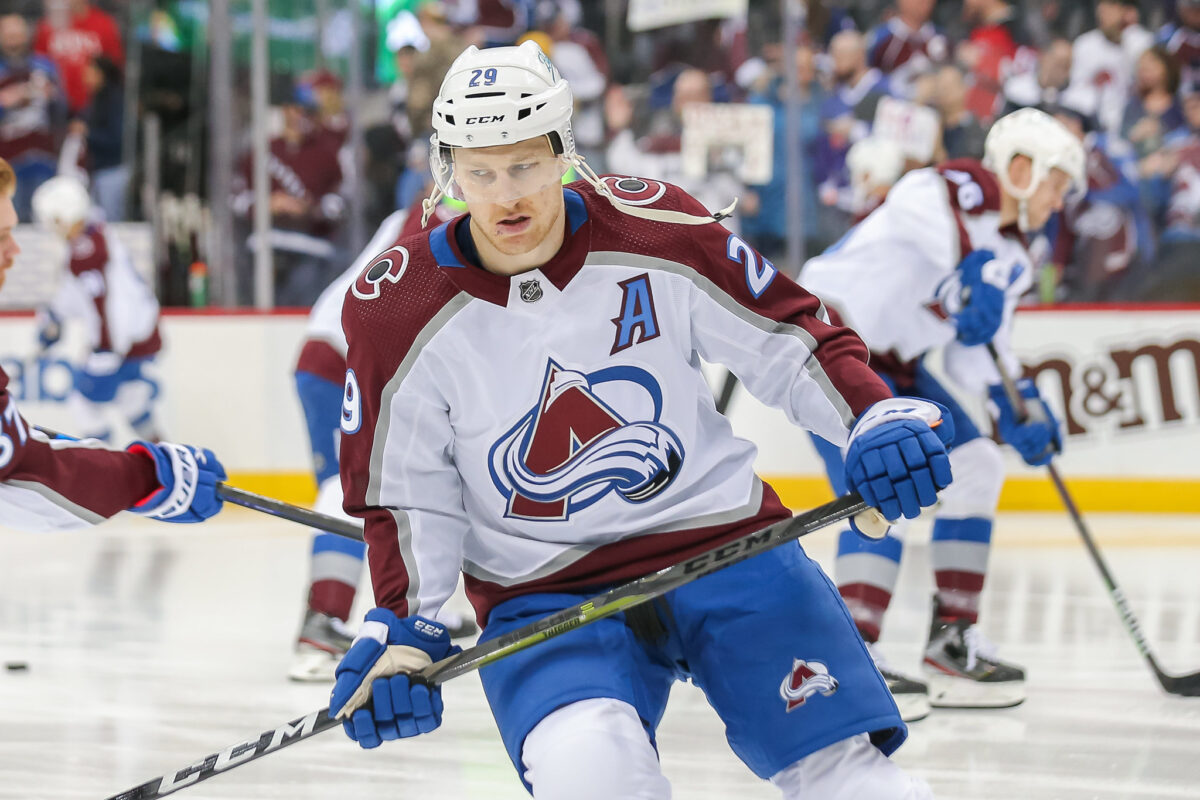
Even so, the Avalanche kept chugging along, currently trailing the Florida Panthers by two points in the overall standings. With one win in their final four games, the 2021-22 squad can tie the 2000-01 edition of the team for the franchise record in points for a single season (118). The introduction of the shootout makes the new wins record (55) slightly dubious, but it’s a testament to the team’s talent and Bednar’s guidance that they are even in the conversation for the best team in franchise history.
The Avalanche are tied for second in goals per game (G/GP), seventh in goals against per game (GA/GP), and third in overall goal difference (plus-83), even after a rocky start. Up until New Year’s Day, they sat 16th in total points leaguewide with a record of 17-8-2. Yes, they were also seventh by points percentage (PTS%), but games in hand still need to be won to matter. The team hit a new gear after the change to 2022, buoyed by good health and a return to form for goalie Darcy Kuemper. With a record of 38-9-4 in that span, the Avalanche lead the league in points (80) and are second by PTS% (.784), more closely resembling the team many picked to romp their way to the Stanley Cup Final.
Landeskog’s recovery from knee surgery introduces some uncertainty, and the team is hoping he can return to top gear during the playoffs without much of an adjustment period. Locking up the West’s top seed gives them some breathing room, with an inconsistent Dallas Stars team as their likely first-round opponent. The worst outcome would be to see the hobbled Vegas Golden Knights (second in CHIP this season) limp into the second wildcard spot and reassemble their full-strength squad as the likely strongest wildcard team ever. The Stars are currently four points up on the Golden Knights and own the regulation plus overtime wins tiebreaker, but it’s the slimmest of margins. The two face off on Tuesday night in a game that could decide the final spot in the West, and one the Avalanche will be watching with intent.
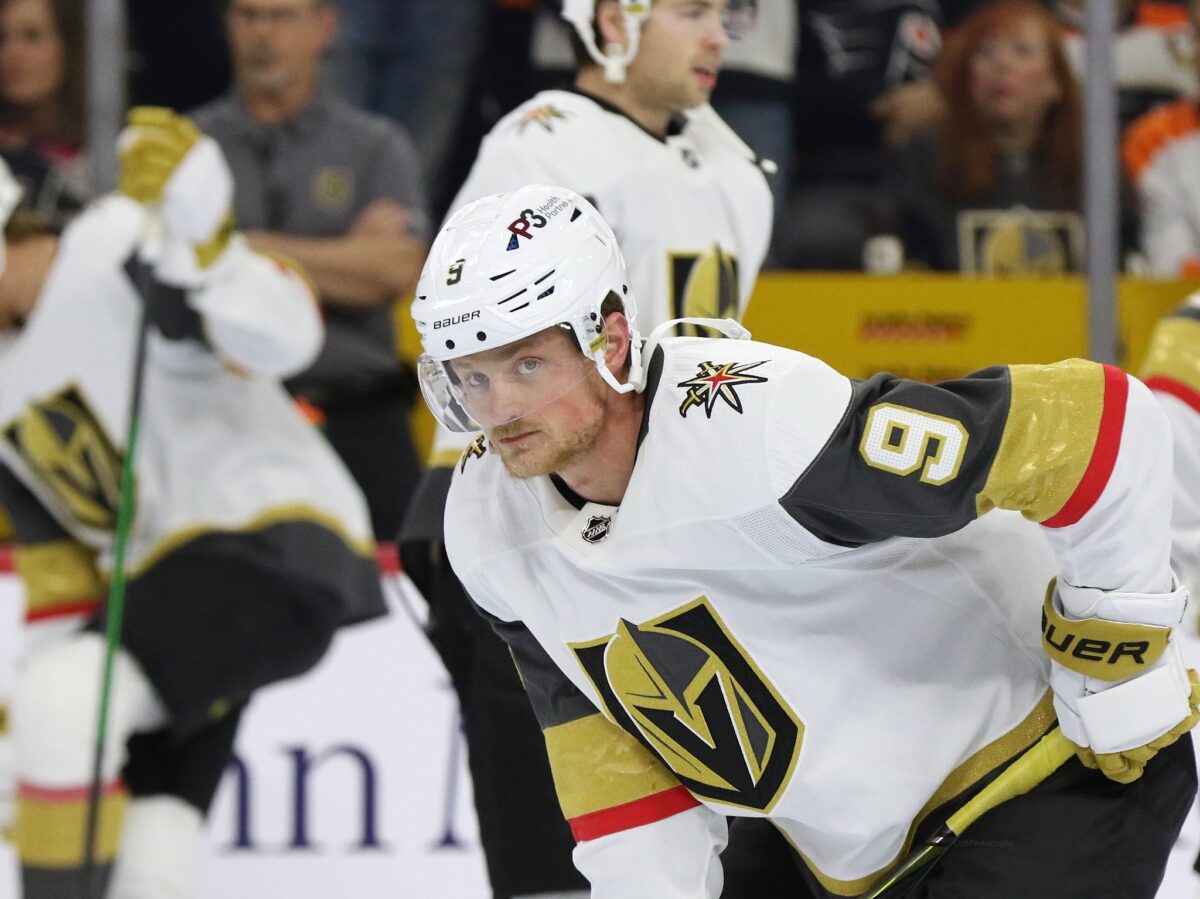
If Robin Lehner is out for the season and the Golden Knights reach the postseason, one of Logan Thompson (.920 save percentage) or Laurent Brossoit (.895 SV%) will take the reins. The two share a meagre 123 total regular-season and playoff appearances between them, but inexperience means little in as small of a sample as the postseason. A fully healthy Avalanche squad has little to worry about, but facing an essentially full-strength Vegas team is as cruel a prize for winning the conference as any other outcome.
A Weaker Western Conference Playoff Field
After a year-long sabbatical from the traditional conference format, the NHL returned to its familiar standings structure this season. The balance of power clearly resides with the Eastern Conference this season, as can be seen with a quick glance at the overall standings. Western clubs only comprise four of the NHL’s top 12 clubs by PTS%, and Colorado is the lone resident within the top four. Perhaps this is more of an argument for the Avalanche to advance to the Stanley Cup Final, but an easier road along the way also suggests that they could have a more full tank of gas come June.
To further emphasize this reality, consider the probable paths to the Final that could be taken by the Avalanche and the Eastern Conference leaders, the Panthers. While the Avalanche could hypothetically face the Dallas Stars (16th by PTS%), Minnesota Wild (fifth), and Calgary Flames (sixth), Florida’s route will be significantly more arduous by comparison. After a relatively tame first-round tussle with the Washington Capitals (12th), the Toronto Maple Leafs (fourth) and Carolina Hurricanes (third) likely await the high-flying Panthers. Regular-season seeding often means little once the puck drops in the postseason, but it’s evident that the Eastern Conference playoff picture is fraught with more potential pitfalls.
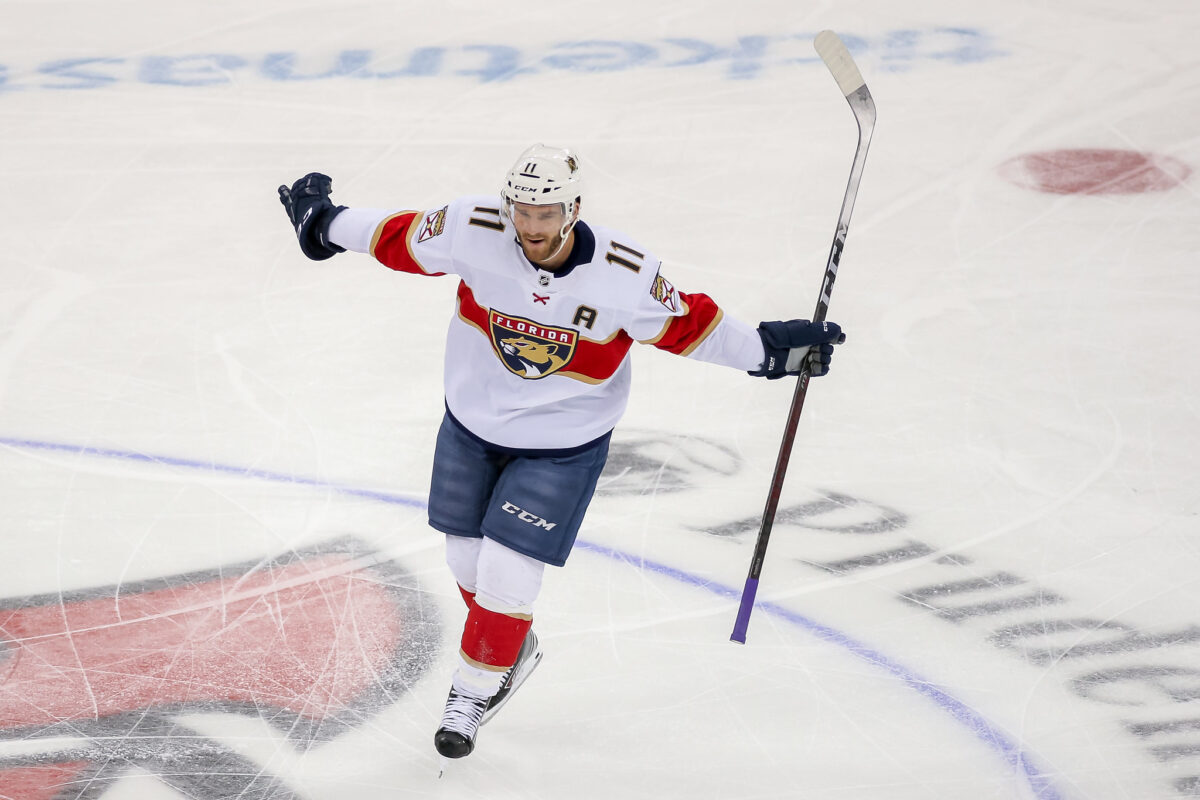
For the more analytically inclined, using expected goals (xGF%) is a good way to approximate the quality of chances each team accounts for over the course of the season. There are several public statistical models which attempt to track and present xGF% by assigning a value to each shot attempt based on the historical scoring rate from the spot the shot is taken. This value ranges from 0.01 (very unlikely to be a goal) to 0.99 (almost always a goal) and accumulates over the course of a game. While each model places an emphasis on different variables, the end goal is always to evaluate the quality of chances a team generates and concedes over a period of time. For a more in-depth read on how xGF is calculated, check out Evolving Hockey’s writeup here.
You may also like:
- Colorado Avalanche Won’t Be Contenders This Season
- Colorado Avalanche Lineup Projection for 2024-25
- Avalanche Giving Nikolai Kovalenko a Chance to Prove Himself
- 3 Avalanche Players With the Most to Prove in 2024-25
- Peter “Foppa” Forsberg: A Biography
Looking at the NHL’s top 10 teams ranked by their share of xGF at 5v5 illustrates how several Eastern Conference clubs sit atop the chance quality leaderboard. The top 10 is split evenly among conferences, but five of the top six hail from the East. Although 5v5 xGF% is but one metric and doesn’t account for goaltending ability or special teams success, even-strength play takes on greater precedence in the playoffs. Teams with a load of skill and goalscoring talent can outperform a lower share of xGF%, but it remains a strong indicator of how well a team is dictating the run of play and is a useful forecaster of their future performance.
| 5v5 xGF% | |
|---|---|
| Florida Panthers | 56.9 |
| Boston Bruins | 56.9 |
| Toronto Maple Leafs | 55.7 |
| Calgary Flames | 55.5 |
| Carolina Hurricanes | 55.4 |
| Pittsburgh Penguins | 54.3 |
| Minnesota Wild | 53.4 |
| Los Angeles Kings | 53.2 |
| Tampa Bay Lightning | 52.8 |
| Vegas Golden Knights | 52.6 |
Using the same Avalanche-Panthers example from above, the Panthers could potentially face the 15th ranked team by 5v5 xGF% (Capitals), the third-ranked (Maple Leafs), and the fifth-ranked (Hurricanes) clubs. The Avalanche (11th with 52.5%) could go through the 13th-ranked (Stars), the seventh-ranked (Wild), and the fourth-ranked (Flames) clubs. Toss in an upset here and there and the path suddenly looks a lot different. As such, the Panthers must be cursing their geographical placement ahead of the playoffs.
As I mentioned before, one metric shouldn’t be used as the sole factor in any predictive exercise. Still, since xGF% started being tracked in the 2007-08 season, being one of the best teams in that regard is a good omen. In the 14 Stanley Cup Finals since 2007-08, the eventual winner finished in the top 10 of that season’s 5v5 xGF% leaderboard 10 times, while the runner-up did the same 12 times. Collectively, 22 of the last 28 Cup Final participants (79 percent) have finished in the top 10 since tracking of the stat began. Both finalists finished in the top 10 on 10 out of 14 occasions, with neither finalist finishing in the top 10 only twice during that span.
Being successful at 5v5 is by no means a prerequisite for winning the Stanley Cup, but there is a clear trend in a certain direction. Individual talent at both the skater and goalie level can often overcome even-strength shortcomings, especially in the small sample size of the playoffs, but consistently driving play gives teams the best chance at sustained success.
Kuemper Playing At Vezina Trophy Level
I recently explored Kuemper’s Vezina Trophy case and his play this season – particularly in the second half – should inspire confidence from the net out for the Avalanche. The team doesn’t force too heavy of a workload upon him (sixth in 5v5 expected goals against per-60-minutes; ninth in all situations), but he’s held firm nonetheless.
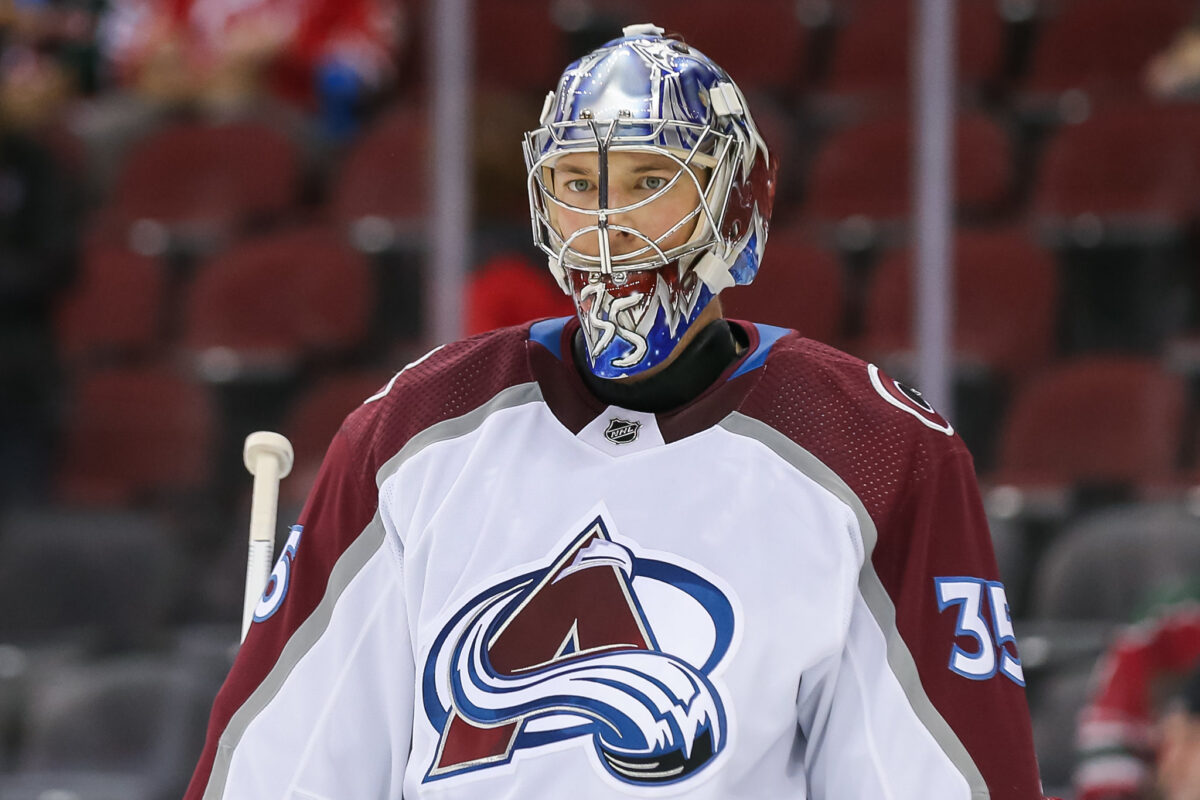
Kuemper’s Avalanche tenure got off to a rocky start as he acclimated to a new system. From the start of the season to Jan. 1, the former Arizona Coyotes’ netminder owned a .907 SV%, 38th among goalies with at least five games played to that point. His goals saved above expected (GSAx) tally (expected goals minus actual goals conceded) was a below-average minus-2.76, 44th among that same group of goalies. The Avalanche traded Conor Timmins, a first-round pick in 2022, and a conditional third-round pick in 2024 for Kuemper, so his subpar performances were worrying for a would-be Cup contender.
Greater familiarity and an easy schedule in January proved to be the catalyst for Kuemper’s resurgence. In 35 games since 2022 began, the Avalanche netminder ranks second in SV% (.930) and wins (23), and second in total GSAx (plus-18.2). His remarkable turnaround is a huge reason for the Avalanche leading the league in both wins and points since Jan. 1, and are grappling with the Panthers for the Presidents’ Trophy.
| Kuemper | NHL Rank | |
|---|---|---|
| Games Played | 54 | 9 |
| Wins | 36 | 4 |
| Save Percentage | .923 | 3 |
| GSAx | 15.4 | 6 |
The Avalanche are well-accustomed to navigating goaltender-related misfortunes in recent playoff outings. The 2020 Playoffs saw starting netminder Philipp Grubauer go down with an injury in the first game of the Western Conference Semi-Final, forcing their second-and third-stringers Pavel Francouz and Michael Hutchinson into action. The two struggled with Francouz posting a .892 SV% in six games and Hutchinson putting up a .910 in four appearances. The Stars ended up taking Game 7 in overtime, casting doubt over the position.
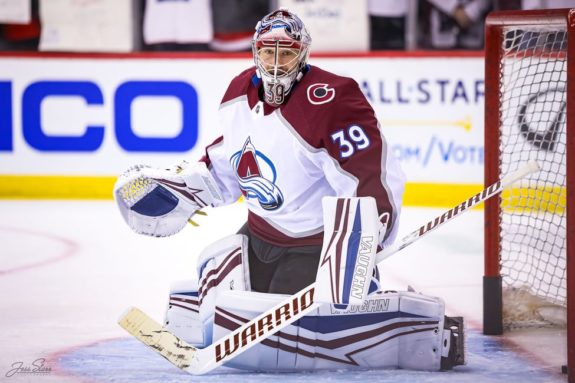
Grubauer returned fully healthy and submitted a .914 SV% in 10 games in 2021, but only a .901 SV% against the Golden Knights in their second-round defeat. Kuemper will enter the 2022 Playoffs with similar numbers to the German, so it’s safe to say uncertainty underlines the goaltending discussion in Colorado. He’s cooled off somewhat (a .913 SV% in April), but his body of work this season should inspire confidence. If not, the Avalanche are one of a limited number of teams that can outscore their problems.
Avalanche Boast Scoring Depth Throughout the Lineup
Apart from the Panthers, no other team can throw out as potent of an offence as the Avalanche. They are second in G/GP with 3.86 and have scored seven goals or more in one game nine times in 2021-22, the most such instances in the NHL this season. They drop down to third when the threshold is lowered to three goals or more (59 times), but their firepower remains evident.
The Avalanche have five players scoring at a point-per-game (P/G) clip this season (minimum 41 games played). No other team even has four, and six are tied with three players each. Although Landeskog, MacKinnon, Cale Makar, and Mikko Rantanen are four of the usual suspects, Kadri going supernova and leading the team in scoring for much of the season considerably raises their ceiling. The Avalanche still pace the NHL if the threshold is dropped to 0.75 P/G (eight players), with Andre Burakovsky (60 points), Toews (57), and Valeri Nichushkin (50) each enjoying their own jumps in production.
| Number of Players | |
|---|---|
| Colorado Avalanche | 8 |
| Toronto Maple Leafs | 6 |
| St. Louis Blues | 6 |
| Florida Panthers | 6 |
| Winnipeg Jets | 5 |
| Minnesota Wild | 5 |
Kadri’s offensive eruption (84 points in 67 games) has come in a contract year and it’s easy to interpret this as a mirage given his previous career-high (61 points in 2016-17). Still, the Avalanche are solely focused on shedding their second-round demons, and his current level of production can only be seen as a good thing when the stakes are at their highest.
Fans can rightfully be skeptical about whether or not regular-season output seamlessly translates to the postseason, and games are decided by more than just putting the puck in the net. The Avalanche tied for second with five players scoring at a 0.75 P/G rate last season (minimum 28 games played), but were dumped in the second round by the Golden Knights.
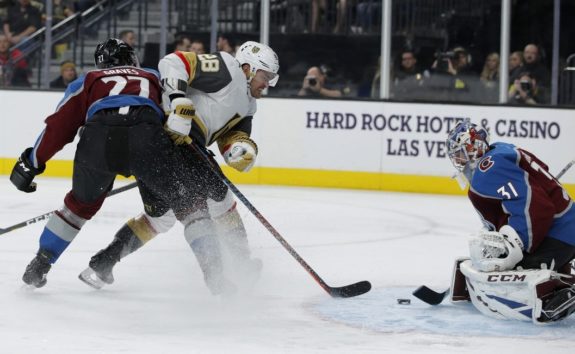
The absurdity of the 2020-21 campaign aside, the final four teams in the playoffs boasted four (Golden Knights and the Lightning tied for third with six teams), two (Montreal Canadiens tied for fifth with six teams) and one (New York Islanders tied for sixth with four teams) such players. It’s an extremely small sample against an unprecedented backdrop, but it’s something to take note of before pencilling in the NHL’s offensive juggernauts into the Stanley Cup Final.
Is 2022 the Year of the Avalanche?
Second-round curses and abruptly shifting refereeing styles aside, the 2022 NHL Playoffs are shaping up to be a memorable journey for the Avalanche. Few teams approach their level of offensive firepower, and they should have a relatively clear path to at least the Western Conference Final before potentially meeting their battle-worn Eastern Conference counterpart in the Cup Final.
As always, health and puck luck will feature heavily in the postseason proceedings, but I expect team captain Landeskog and the Avalanche to be lifting their third-ever Stanley Cup this spring. Let me know in the comments who your pick is for the Stanley Cup champion; one of us has to be right.
Data courtesy of Evolving Hockey, Hockey Reference, the NHL, and NHL Injury Viz. Statistics are accurate as of April 24th.